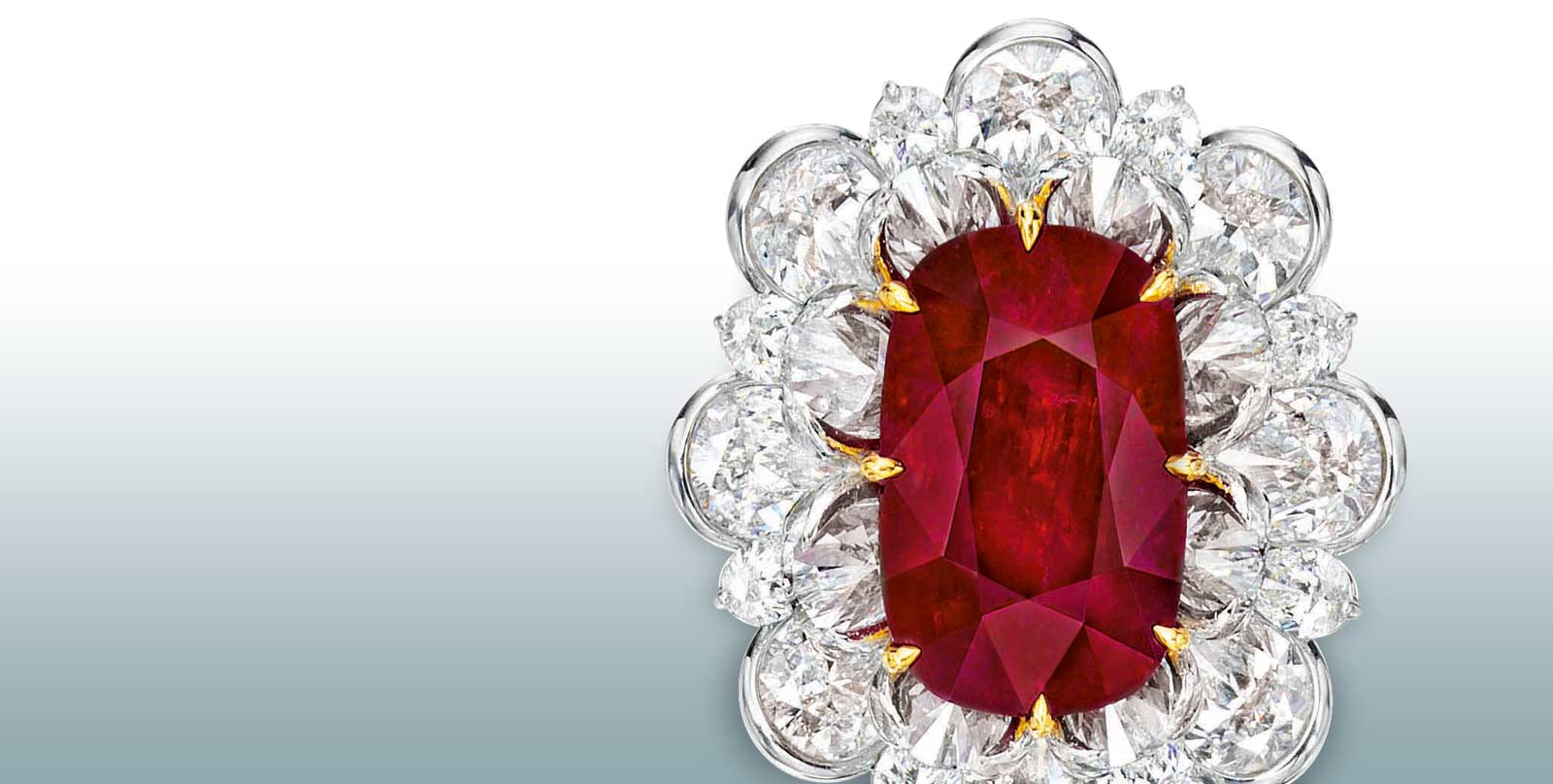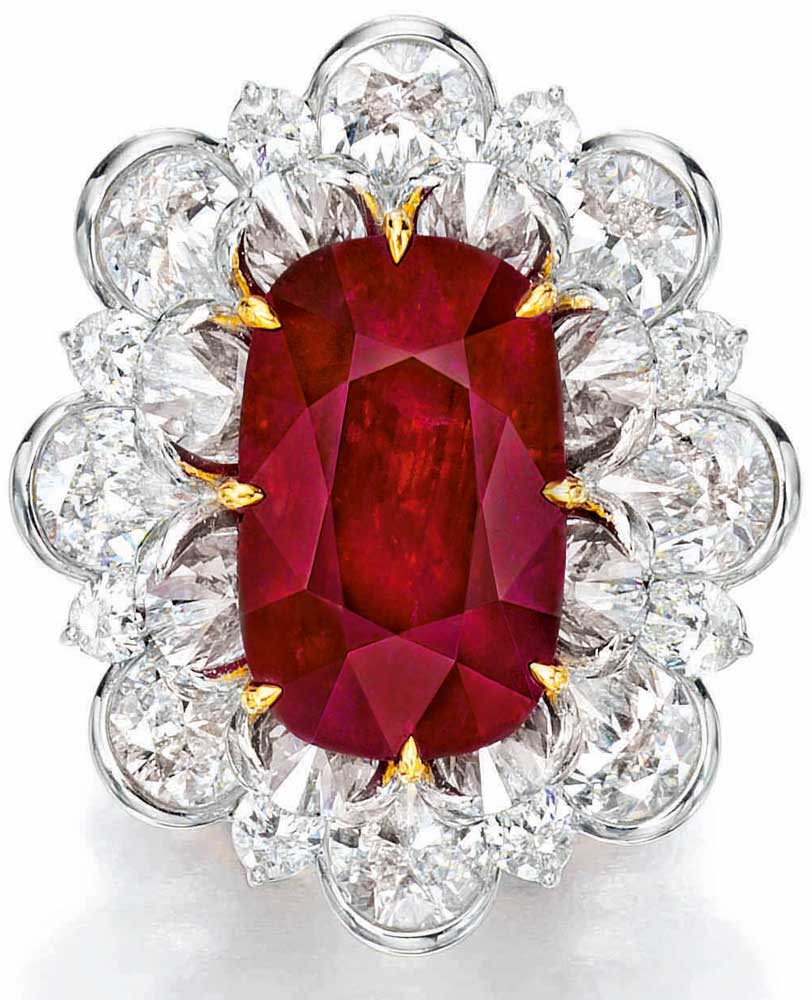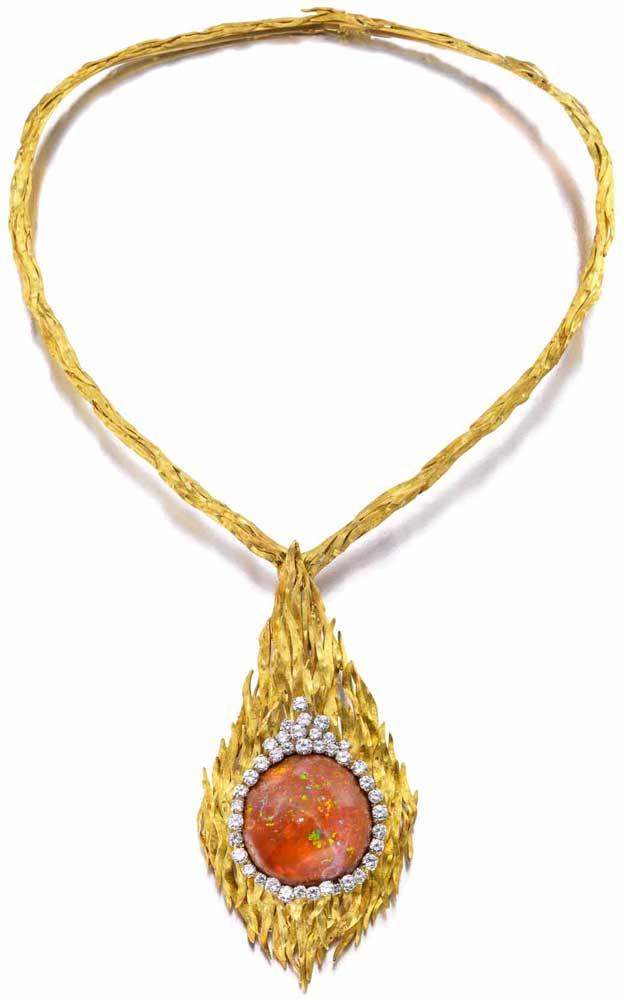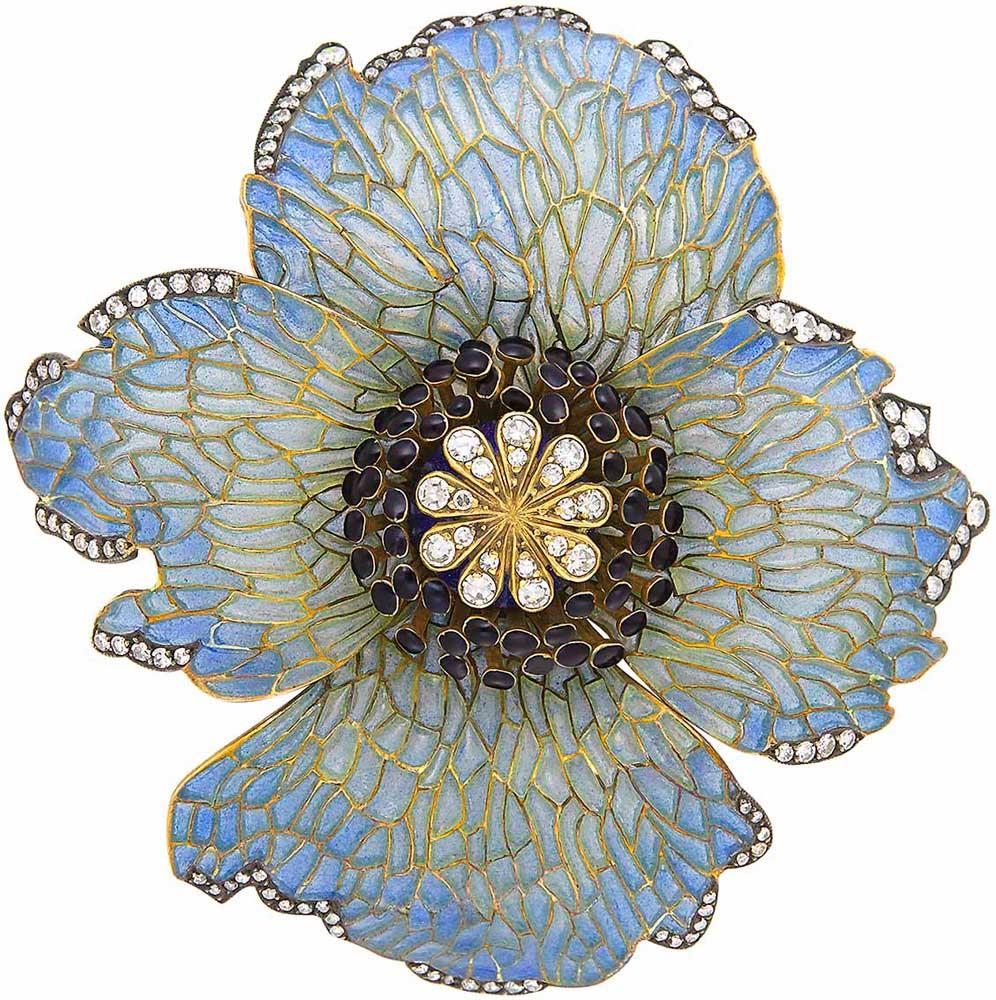
A Price Above Rubies


A Price Above Rubies
In the annals of rarity, a large, fine Burmese ruby is considered the prize above all others. It is the stone that finds a place in the bible: “Who can find a virtuous wife? For her price is above rubies.” In modern times, that price is high indeed. The 24.70 carat cushion-shaped ruby sold at Sotheby’s Hong Kong sale for $11 million was backed by all the scientific information the industry has to offer, along with more romantic superlatives evoked by its shimmering beauty. While 100-carat diamonds seem to be coming out of mines like mere pebbles, large, spectacular rubies are beyond rare. According to Christopher Smith, president of American Gemological Laboratories (AGL), “Untreated Mogok rubies in excess of 20 carats are among the rarest gems in the world. Very few of these treasures from the world’s most important and legendary ruby source are known to exist.”
Mr. Smith’s description summarizes the key elements that make this gem a standout. The Mogok mines of Burma have been known to produce rubies of the finest color and quality for several hundred years. Being of Burmese origin alone increases its value at least ten times compared to a stone of comparable size from neighboring Thailand. The desirability of rubies from Mogok mines may be traced to the specific minerals present during their creation which gives the stones their unique red color. “Untreated” refers to the application of heat to bring out or enhance the color of the stone, a common practice in ruby production today. As the mines have been worked through the centuries, the sizes of the gems found are rarely larger than five carats, making this example an outstanding and valuable find.

Purity and saturation of color are the distinctive characteristics of Burma rubies. Discerning the origin of the source of a stone once it has been faceted is one of the most challenging tasks faced by reputable gem laboratories. This stone carries grading reports from the Swiss Gemmological Institute, known as SSEF, the Gubelin Laboratory and AGL, all certifying that it shows no evidence of heating and that the origin is Burma. These highly respected laboratories are known for their expertise in examining and grading colored gemstones.
The exquisite ruby was set within a frame of sixteen pear-shaped diamonds, all of which were certified to be the finest color and clarity. The shank of the ring was pavé-set with brilliant-set pink diamonds.

Mysteries of the deep
Sapphire Octopus brooch by Michele della Valle, $27,500
Christie’s NY
April 17, 2018
Geneva-based Italian jeweler Michele della Valle is known for his dazzling use of colored gemstones, impeccably set into original designs. His collection of jewelry takes themes from nature, perhaps none quite as charming and whimsical as this octopus brooch. Have eight tentacles ever been so alluring and appealing? The creature’s pavé-set sapphire and diamond body sits above bands of bezel-set round diamonds while the sapphire and diamond tentacles swirl about amid accents of black and white cultured pearls. The gently waving tentacles belie the durability of the materials used including the 18k white gold mount. Measuring just 1-½ inches, the brooch more than doubled its high estimate, a reflection of della Valle’s enthusiastic band of collectors. Della Valle sources his gems with care, then selects stones from his storehouse that bring his designs to life. From his earliest days in his native Rome, he was a discerning buyers of colored gems.
Animal-themed jewelry, particularly brooches, can be found in most jewelry sales and are an ever-popular subject for jewelers and their customers. Within the same sale buyers could choose from a menagerie of creatures including lovebirds, a kingfisher, ducks, even a unicorn.

Ablaze
Fire opal and gold pendant necklace by Andrew Grima, $50,000
Bonham’s NY
April 17, 2018
A large Mexican fire opal, with the characteristic orange tones of that gemstone, is set within an 18k gold frame of radiating elements, all of it appearing to be ablaze. The pendant, suspended from a matching necklace, is by Andrew Grima, himself a shooting star in the jewelry world of the 1960s and 1970s. Fire opal is so named for its distinctive appearance. It is a close relation to other opal formations but is known more for its play of orange tones, rather than the usual garden of colors found in traditional black opal and white opal. His work was avant-garde wherever it appeared, including in his namesake shop on New York’s 57th Street. The storefront itself, with its geometric shapes emanating onto the street, was as different from its staid counterparts as the jewelry was from the typical high-end creations of the day.
The 82.30 carat fire opal is shaped as a cabochon, a stone with a smooth domed top. The opal is set within a frame of round diamonds weighing a total of 4.10 carats. The shape of the gold frame is typical of Grima’s distinctive style and though it looks as if it could be lethal, wearers say it is quite comfortable on the neck.

Through the looking glass
Plique-à-jour enamel brooch by Moira, $8,750
Doyle NY
April 24, 2018
The delicate lacy petals of this enamel brooch exemplify the art and mystery of the technique known as plique-à-jour. The French term conveys the notion of light coming through a window, or in the case of this flower brooch by the English maker, Moira, many tiny panes of glass. Fine gold veins set the panes of blue-green glass apart. Each petal is edged in single-cut diamonds, and centered on a blue and green enamel dome. Single-cut diamonds typically have about 16 facets, enough to bring out the brilliance, while keeping labor costs lower. In this instance, they are perfect for framing the true artistry of the enamel work.
Plique-à-jour is rarely seen in contemporary jewelry and requires extraordinary skills in making. While the enamel is supported by a backing material during the process of creation, once the piece is fired in a kiln, the backing is removed. The enamel panes or panels are then exposed to the light. Enamel is made from a form of powdered glass and is intrinsically strong, like glass, but also subject to breakage. This piece shows complete command of the technique along with great artistry in conveying a flower in full bloom.
























